Opinion
Where the bloody hell are all our international tourists?
Anthony Dennis
Editor, travelCongratulations.
You’ve just been appointed managing director of Tourism Australia – the peak global marketing arm responsible for selling the nation to the world’s prospective visitors, and no easy task either considering our geographic relation to most of the rest of the world.
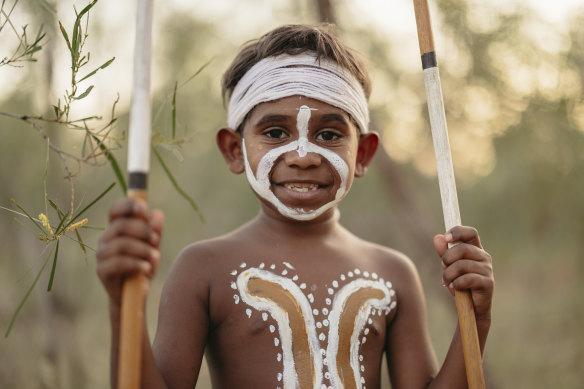
How to bring the international visitors back? Mabu Buru Tours, Broome, WA
But, first, we’ll require your manifesto and, for good measure, consider the fact that whatever you market to the world will also likely benefit domestic travellers, because what overseas visitors get to experience, by way of attractions designed to entice them, can also be enjoyed by locals.
This won’t be a simple task. In 2019, approximately 9.4 million tourists visited Australia from overseas, a 2.4 per cent increase from 2018. By contrast, and largely thanks to the effects of the pandemic and the negative publicity generated by draconian lockdowns, Australia attracted only 7.3 million international visitors in 2023.
That makes more than 2 million tourists in arrears, so, in the spirit of national duty, we’ve turned to seven Traveller experts, all vastly experienced in travel within Australia, for some ideas and, we hope, a bunch of answers.
Sure the real team at the real Tourism Australia may scoff at some (or all) of their suggestions but remember they’re the mob who demanded the world know “where the bloody hell are you” and reverted to a slogan exhumed by the Paul Hogan ad days.
So then, let’s pop some ideas on the barbie, shall we?
THE SLOGAN Australia: as nature intended
THE PLAN
At it stands there are two Australias – the one that is sold overseas, and the one that is kept in reserve for domestic family holidays. And it is time we started sharing.
The simple, natural Australia of awe-inspiring beaches and wildlife-sprinkled national parks is one that many potential visitors crave.
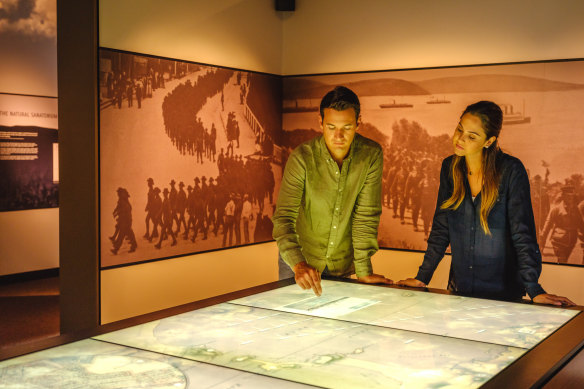
The National Anzac Centre in Albany, WA – the sort of attraction the country needs more of.
The likes of Jervis Bay, NSW, the Gippsland Coast, Victoria, the Yorke Peninsula, SA, and the beach towns north of Perth have enormous potential.
But Australia doesn’t push them overseas because there’s not enough accommodation, and it’s all booked out in the school holidays.
This has to change. Australia needs to cultivate and support careful, conscientious development around these coastal honey traps, where the clean air and natural beauty are things visitors covet. It’s what they can’t get at home.
That means financial incentives for solid three- and four-star hotels in places where it’s just caravan parks and holiday lets. And it also means development of tent peg attractions in the regions that wouldn’t look out of place in the big cities.
The National Anzac Centre in Albany, WA, and Australian Stockman’s Hall of Fame in Longreach are the sort of attractions the country needs more of.
The little things matter, too – like interpretive signs on walking trails, telling visitors about the environment and history of the places they’re walking through. It’s something Australia does well but could roll out even further.
My campaigns will be brave enough to play up the aspects of Australia that visitors don’t have to pay for – the nature, the wildlife, the national parks, and the sense of freedom on a driving holiday.
It’s time to take some emphasis off the luxury lodges, expensive cultural experiences and multi-day guided walks, and include the simple, serendipitous discoveries travellers treasure. I will talk to visitors, ask them about the unexpected highlights they loved, and use the quotes in promotional campaigns.
My slogan – “Australia: As Nature Intended” – can easily be adapted to “Road trips: As Nature Intended”, “Family holidays: As Nature Intended”, “Swimming: As Nature Intended” and so on. I’ll sell the big experiences well, but in truth, it’s what you do in the days between the whale shark swim, BridgeClimb and Field of Light that makes an Australian holiday special.
It’s time to recognise and push the idea that every day in Australia can bring joy, contentment and wonder without spending big. – David Whitley
THE SLOGAN Australia: get hungry
THE PLAN
Admittedly, as a tourism slogan, it might lack the punch of “Where the bloody hell are you?” or even the knockabout matey-ness of “Come and say g’day”, but we have something to work with here, because visitors to Australia – and indeed, visitors from Australia – should be travelling this wide brown land thinking about food.
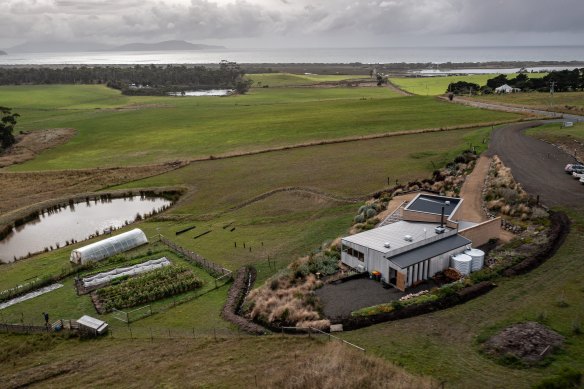
Tasmania’s Van Bone – a regional highlight on the food trail.
They should be constantly getting excited about their next meal, indulging in a moveable feast that takes in what I honestly believe is one of the finest dining cultures on the planet.
Get ready though, as the new managing director of Tourism Australia, things are about to change. First up, all records of any predecessors who may have gone on to become prime minister are being expunged. And whoever came up with the “Philausophy” slogan is being counselled.
I have a few new ideas. Most of them are around food. Because it’s time to cast aside our cultural cringe and declare to the world that everyone should be coming to our country just to eat.
We can sell Australia as a gastronomic destination and be confident that we can deliver, even to visitors whose own food cultures are so complex and cherished.
And the secret to our success is regional dining. Stay with me here. I’m convinced that regional areas in Australia offer our finest gastronomic experiences, particularly for visitors.
These are destinations where dining is unique, with a connection to place that is immediate and exhilarating.
Consider the likes of Brae, Moonah and O.My in Victoria; Van Bone and the Agrarian Kitchen in Tasmania; Hentley Farm, Fino and Maxwell in South Australia; EXP., Bistro Livi and Pipit in NSW; Vasse Felix and Millbrook in WA. These are singular dining experiences, distinctly local, yet world class in delivery.
We have wine in Australia too, far better wine than any international visitor would expect given the overseas diet of cheap, mass-produced shiraz. Call past our cellar doors, dear travellers, and discover a welcoming culture of tasting seriously high-quality wine and spirits.
Even some Australians would be surprised at the quality of food and drink outside our big cities. And don’t forget those urban hubs, hotbeds of culinary talent that boast incredible diversity, where you can eat dim sum for breakfast, a Greek feast for lunch and Argentinian-style steak for dinner and wake the next morning and try three entirely new cuisines.
Get hungry. Whether you’re visiting from overseas, or exploring your own backyard. Come to Australia for the food. Head to the regions to experience unique world-class dining. Explore the cities for the cuisines of the world.
And tell your friends. – Ben Groundwater
THE SLOGAN Australia. Go ahead, you deserve it
THE PLAN
I’m the new MD of Tourism Australia and I’ve got my crystal ball out. I’m not just thinking of the next few years, but also where tourism will take us into the next decade and beyond.
We have some hard truths to consider. In past campaigns, we’ve showcased our beaches and beautiful vistas. We’ve successfully used home-grown celebrities such as Paul Hogan and Chris Hemsworth. The campaign, “Come and say g’day”, highlights our friendliness as a nation.
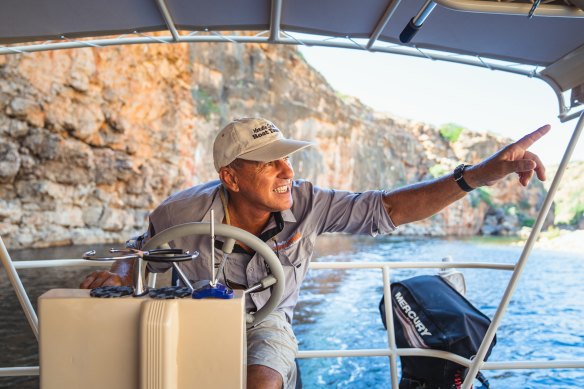
Stay longer and look deeper – on tour with Yardie Creek Boat Tours, Ningaloo, WA.
In a fractious world, the fact that we’re “friendly” certainly helps, but we need more incentive to bring people across the other side of the world on a long, costly journey. (Bearing in mind most international visitors to Australia come from our closest neighbour, New Zealand.)
Working against us is not just distance and expense, but a growing uneasiness with the carbon footprint of long-haul travel, with many travellers, especially the more eco-conscious Europeans, swapping out air travel for trains, something they won’t be able to do to get here, or while they are here in any significant way.
Our incoming tourist numbers also rely on conventions and meetings, and this may prove challenging in the future as corporations and businesses increasingly adopt corporate environmental and social responsibility targets.
One flight to Australia might blow a couple of year’s carbon budget. One day, maybe soon, the leisure traveller will make this reckoning too.
We need more of our destinations, our hotels, our tours to really beat the drum of genuine sustainability so that we’re not just a great place to visit, we’re an ethical one. It may not be the sexy thing that attracts the visitor in the short term, but in the long run it will count.
The tremendous growth in Indigenous experiences will really set the benchmark for the future. And we also need to think about what kind of tourist our resources can support.
Rather than opening the gates to mass tourism, we need to attract quality over quantity, tourists who’ll stay, participate and spend money locally, whether that’s backpackers or wealthy travellers. We want all Australians to benefit from the exchange with visitors, not just some of us.
With so much concern about physical and mental wellness, Australia could be positioned as a sanctuary in a troubled world. A true land of plenty.
But the new kind of traveller will want a significant reward to balance out what they spend in money, time and carbon to get here. It has to be meaningful, perhaps life changing, more than just sharing our sunny lifestyle for a couple of weeks. – Lee Tulloch
THE SLOGAN The Dreaming Destination
THE PLAN
According to Tourism Australia’s own collateral, there are “more than 200 Indigenous tourist experiences from around 50 businesses around Australia” accredited as Discover Aboriginal Experiences.
This is a part of the organisation’s Signature Experiences of Australia Program.
When we say “more than”, we usually mean somewhat less than the next big denominator, so we can safely say less than 250 Indigenous tourism businesses in Australia meet the criteria for this stream of Tourism Australia marketing.
It isn’t a lot, when you consider the many tourism businesses in Australia overall. And it seems an especially small number when you consider, as Marcia Langton says in her great book, The Welcome to Country Handbook, “Nowhere else in the world can you see and experience the oldest living cultures of humankind.”
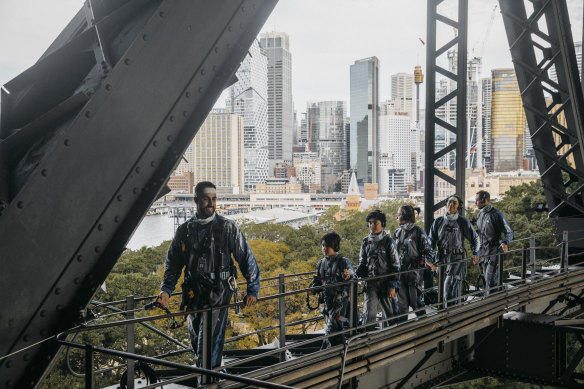
The Burrawa Indigenous Experience at BridgeClimb, Sydney.
Other countries have beaches, wine country, great cities, mountains and any number of the other attributes Australia prides itself on. No other nation has the oldest living culture on the planet.
It’s special. We should be treating it as the jewel it is and encouraging everyone to realise that.
The number and quality of Indigenous experiences on offer is growing, as is interest from overseas visitors and domestic tourists. And importantly on many levels, some are crossing over, combining Indigenous culture with primarily non-Indigenous interests.
There are some amazing adventures and encounters of this type: Tribal Warriors’ Sydney Harbour Cruises and the Indigenous BridgeClimb Experience, Sand Dune Adventures’ quad biking in Port Stephens, for example are activities sought for their own sake offered with an Indigenous twist.
These fabulously fresh ideas represent the future of Indigenous tourism, but the sector could do with some fresh ideas from our marketing team.
To start with, we are going to ditch the travel influencers (remember them before Christmas? We gave three of them all expenses paid trips Down Under to the tune of $30,000 each and got not a lot in return).
And I’m going to give our support and expertise to building the online profiles of a team of Indigenous ambassadors to appeal to young travellers – young creatives, athletes and scientists who can present the fresh, contemporary face of Indigenous Australia across social media.
And with the likes of Accor Hotels offering a national program connecting Aboriginal and Torres Strait Islander peoples with career opportunities at the company’s nationwide properties, we will up our efforts to work closely with these programs, with the aim of ensuring Indigenous stories aren’t siloed in specific experiences (though purely Indigenous-focused experiences should and must be supported).
I’d love to see our Indigenous culture become a naturally permeating part of our most popular attractions and of everyday tourism interactions, from check-in to cocktail time. – Julietta Jameson
THE SLOGAN Put Another Shrimp On A Different Type Of Barbie…
THE PLAN
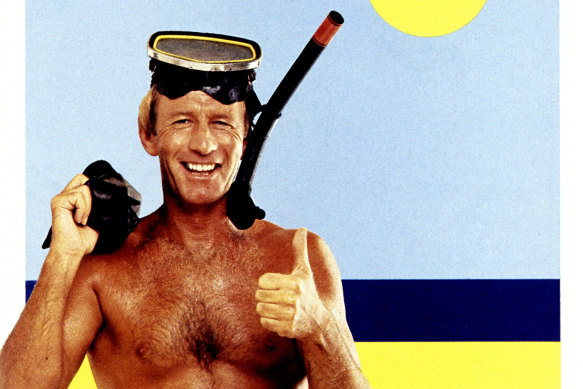
Bring back the good looking blonde – the 1984 Tourism Australia campaign featuring Paul Hogan.Credit: Tourism Australia
Okay team, we’re going to bring back that good-looking blonde we once used to sell Australia to the world.
I’m not talking about Lara Bingle, I mean Hoges … Paul Hogan. The whole planet fell in love with him, then with all of us back then. They couldn’t get enough Australia.
What happened?
So we’re going back to selling the unsophisticated Australian travel experience, the rough-and-ready characters you might meet, the “she’ll-be-right, mate” mentality of our people.
Just about everywhere in the world offers sophistication – if Americans want sophistication and culture, they go to Europe. If Europeans want it, they travel in Europe.
We’re going back to selling the simplicity of the Australian travel experience. We’ve lost sight of our comparative advantage over everybody else – and that’s our people, and our wildness.
People in Europe and America love to think it’s dangerous in Australia – so cue the crocs and keep the cameras rolling.
Oh, and by the way: let’s pretend the latest Tourism Australia campaign with the talking unicorn and kangaroo never happened, OK? Not sure whose idea that one was, but it thankfully wasn’t mine.
I’m sick of our modern celebrities selling Australia – most of them haven’t lived here since they starred on Home & Away.
Foreigners like to think Australia’s an egalitarian kind of place, I reckon some of them even think we’re just a little bit commo. There’s nothing egalitarian about using a Hemsworth, on their multi-million-a-movie pay packets, no matter how good he looks in a tight-fitting shirt, or sans one.
This time we’re going to give the Opera House and the Harbour Bridge the flick. Sorry Sydney, but no-one’s flying across the whole world for a city. They have them at home.
We’ll keep Uluru though, no-one gets sick of looking at that rock, but I need more “wild”.
I want big surf breaking on a deserted beach, green water breaking onto red dirt…that sort of thing. Read a couple of Tim Winton novels, then make them come to life.
Don’t give them Bondi, they’ve already got enough people on their beaches. We’ll give them Ningaloo and the Coral Coast in Western Australia: places like Turquoise Bay or Gnaraloo with all those loggerhead turtles.
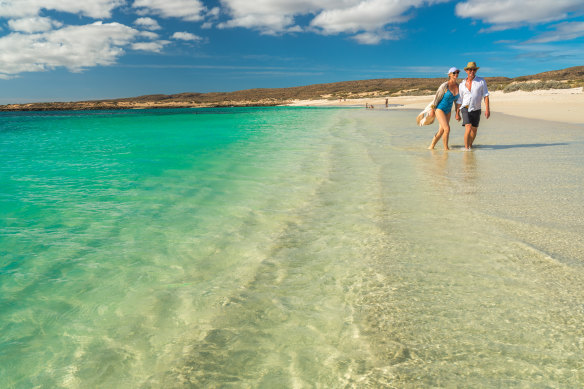
Turquoise Bay and its long and uncrowded beaches.
And I want lots of the Kimberley in there, OK? Granted: most Americans and Europeans won’t actually get there, but a quarter of all our islands are up there. And waterfalls flow horizontally and bull sharks fight big crocs for food right in front of you.
That’s precisely what I’m talking about. – Craig Tansley
THE SLOGAN The final frontier
THE PLAN
Be dazzled by the most ancient, the most isolated and easily the most fascinating place on earth, and learn about the first peoples who lived there from their present-day ancestors.
Western Australia’s Kimberley, one of the world’s last true wildernesses, is a wondrous region that too few visitors ever explore. Yet today it’s more accessible than ever, and can be seen in five-star luxury, or in much more relaxed affordability.
It’s a land of crashing waterfalls, towering 1.82-billion-year-old ochre rock faces, awe-inspiring Aboriginal rock art, a thrilling history, pristine nature with sharks, crocodiles and turtles, disappearing, and magically re-emerging, reefs, and the kind of views, and experiences, that can be absolutely life-changing.
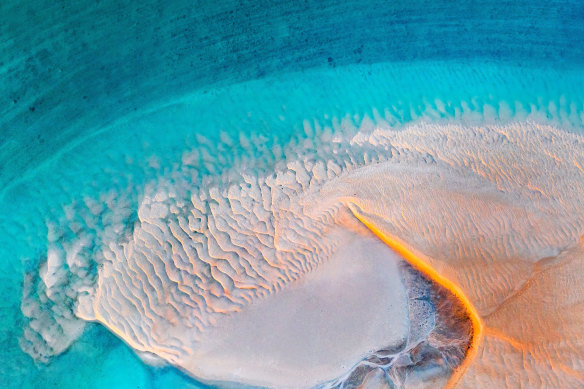
The colours of the Kimberley.
The people are incredible too, unlike anyone you’ve ever met before.
They say you know when you’re in the outback as it’s a place where the handshake is a little stronger, and the smile lingers longer. That’s yet another facet of the Kimberley that can be highlighted, too.
Just as Sydney, the Great Barrier Reef and Uluru are front of mind for anyone visiting Australia, or for Australians travelling within their country, I’d aim to make the Kimberley the Next Big Must-See. After all, there’s nothing else quite like it in Australia… or beyond.
There are simply so many attractions to focus on: the First Nations guides talking about their unbroken connections to the land and how they see it; the art in the world’s first open-air galleries, five times older than that in the Egyptian pyramids; an astonishing range of massive single-drop and four-tiered waterfalls; the Montgomery Reef; the Horizontal Falls; the bizarre striped domes of Purnululu; and, at the end of each day, those starry, starry nights.
There are a number of cruises around the coast of the Kimberley, from Broome to Darwin and vice versa, with Zodiacs to zip travellers closer to the main attractions, and helicopters to whisk them to spellbinding viewing points.
Then there are the land tours, also visiting the three kilometres-long legendary Windjana Gorge, a spiritual place for the Bunuba people, and staying at isolated wilderness lodges.
Of course, travellers can visit on their own self-guided trips, hiring a car and staying at hotels or campsites along the way, or using a four-wheel drive to tackle the more ambitious, and illustrious, outback adventure – WA’s Gibb River Road.
There’s a reason this region is seen as the final frontier, and a land that time forgot. But it’s now the moment to put it back front and centre of the Australian travel map as a place where visitors can go for the ultimate exploration, of both the place and themselves. – Sue Williams
THE SLOGAN “Allawah Australia”*
THE PLAN
In early 2022, I took an extraordinary walk through Queensland’s Mossman Gorge, guided by an Eastern Kuku Yalanji local.
As we wandered through rainforest fringing the roaring river, our Indigenous guide taught us about reciprocity and how his mob practiced it – never take more than you need, always give the land a chance to regenerate.
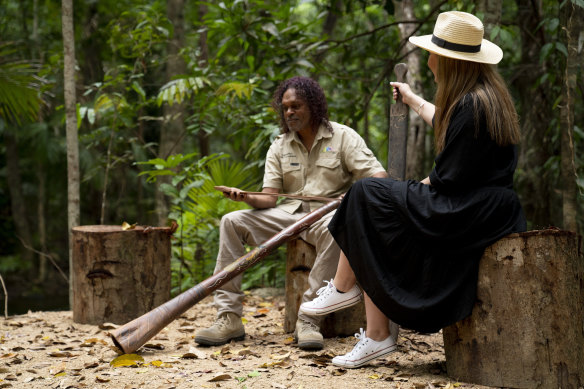
Dreamtime Walk in Mossman Gorge guided by an Eastern Kuku Yalanji local.
“You have to look after Mother Nature,” he said, “or she won’t look after you.”
His words stayed with me, and this philosophy and sense of stewardship will underpin everything I do as MD of Tourism Australia.
Or co-MD, I should say, as it’s a role I would want to share with an Indigenous Australian – perhaps Delta Kay, who does wonderful things for tourism on Bundjalung country, where I live.
Our focus would be on regenerative travel, helping visitors renew themselves and the natural world while Down Under, drawing on the wisdom we are so lucky to have access to in Australia, from the world’s oldest living culture.
We’d present Australia as the ultimate slow travel destination, discouraging wham-bam tourists and encouraging visitors to linger and make their time here nourishing – for themselves, local communities, and the land itself – we want visitors to “Grow in our backyard”.
Implementing a visitor statement of intent, similar to the tourism pledges of Iceland and Palau, would be our first order of business. As part of their visa application, visitors would need to state why they want to visit Australia, and how they plan to give back while they’re here.
Partnering with Qantas, we’d make lengthy trips more attractive by providing discounted flights for stays longer than three weeks.
A one-off tourism fee of $400 paid by each visitor, similar to Bhutan’s daily fee, would offset visitor’s carbon footprints, and go towards incentives for booking accredited regenerative experiences.
This could include discounts for travellers who shop at local farmers markets, choose off-grid locally-owned stays, buy art and handicrafts made by Australian artisans, book Aboriginal-owned and -led experiences, or participate in rewilding or conservation projects.
We already do a great job selling our awe-inspiring landscapes; it’s time to show visitors that Australia’s beauty spots are more than great selfie backdrops, and how they can help actively improve them, while improving their own lives. – Nina Karnikowski
*The Aboriginal word “allawah” meaning “stay here,” or “rest”.
What Australia does well as a destination
- Australians’ friendly, relaxed, unpretentious approach to life translates into an appealing style of service.
- Some of our five and six-star hotels and resorts are truly among the best you’ll find anywhere in the world.
- Many of our Indigenous tourism offerings are outstanding with such experiences uppermost on the list of what international visitors seek from an Australia holiday.
- Australia is home to 20 UNESCO World Heritage sites (one more than Greece) including natural and man-made attractions.
- Australia boasts a trio of the world’s best long-distance rail journeys in the form of the Indian Pacific, the Ghan and the lesser-known Great Southern.
What Australia doesn’t do so well as a destination
- Australians’ friendly, relaxed, unpretentious approach to life can translate into an unappealing and unpolished service style.
- Many of our five- and six-star hotels and resorts are really three and four stars masquerading as five and six stars.
- Aside from its trio of world-class tourist journeys Australia is a failed state embarrassment when it comes to the provision of long-distance train travel.
- Australia’s record of managing and maintains its World Heritage sites, as evidenced by Queensland’s Great Barrier Reef and Melbourne’s Royal Exhibition Building, is flawed to say the least.
- Many Indigenous tourism business ventures in Australia sadly fail, which may suggest that domestic travellers pay lip service to them.
– Anthony Dennis
Sign up for the Traveller Deals newsletter
Get exclusive travel deals delivered straight to your inbox. Sign up now.